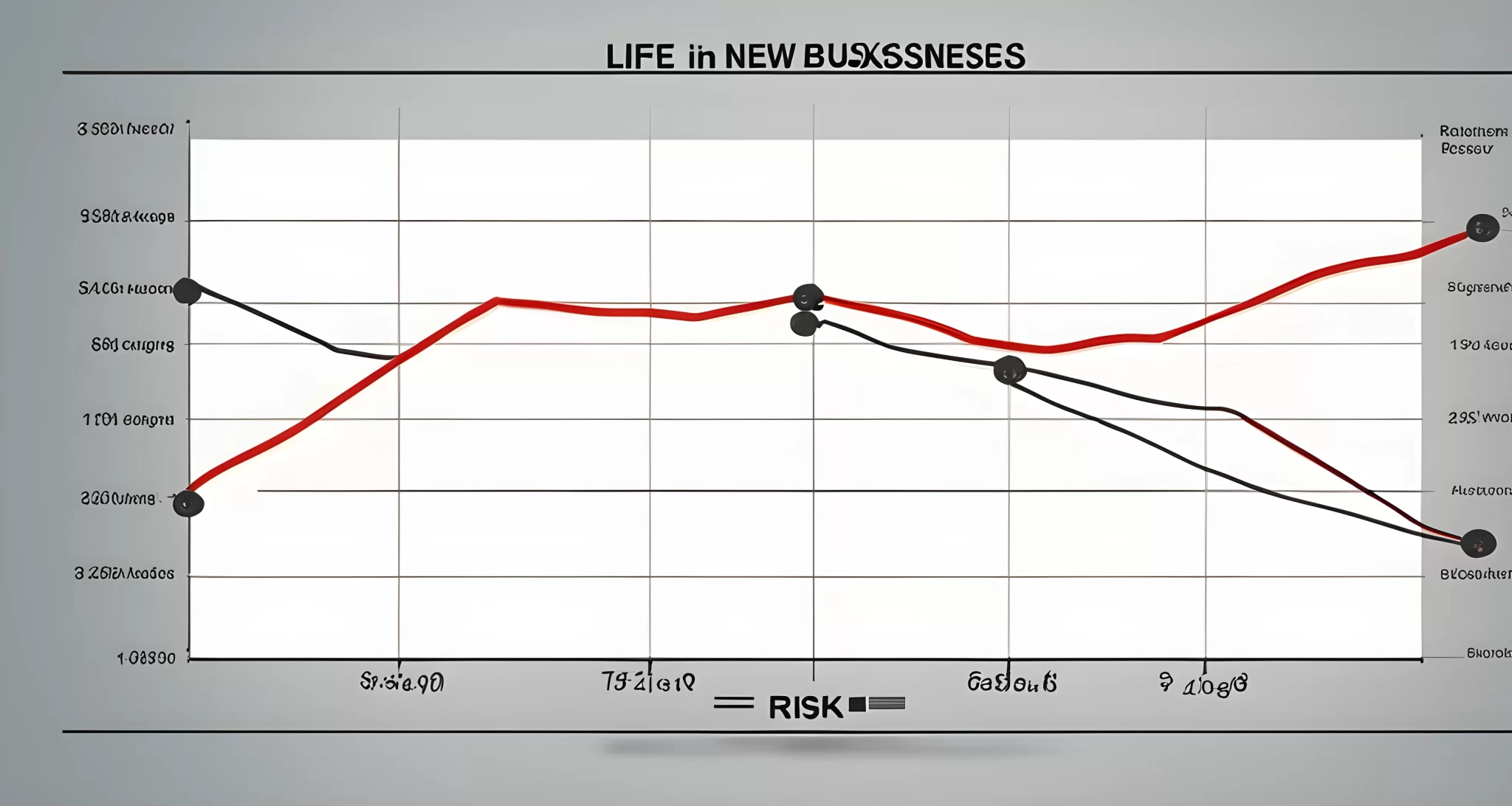Introduction to Risk and Return
In the context of new businesses, the balance of risk and return is a crucial aspect of financial management. Entrepreneurs and investors alike must carefully consider the potential gains against the risks involved in order to make informed decisions. This principle is rooted in the fundamental investment principle known as the risk-return tradeoff, which indicates that the higher the risk, the higher the potential reward.
Understanding this tradeoff is essential for individuals venturing into new business ventures. It involves assessing the level of risk associated with different investment opportunities and weighing them against the potential returns. This concept applies not only to financial investments but also to the establishment and growth of new businesses.
As entrepreneurs navigate their way through this delicate balance, it’s important for them to recognize the various types of risks that can impact their ventures. These risks can include market volatility, regulatory changes, competition, and financial instability. Each type of risk presents its own set of challenges and potential rewards.
To effectively manage these risks, entrepreneurs must also have a solid understanding of how returns are generated in new businesses. Whether it’s through revenue growth, cost savings, or asset appreciation, understanding how to maximize returns is crucial for long-term success.
Furthermore, recognizing the correlation between risk and return is essential for making sound financial decisions. By acknowledging that higher potential returns are often accompanied by higher levels of risk, entrepreneurs and investors can make more informed choices about where to allocate their resources.
Ultimately, addressing the importance of risk management in new businesses is vital for ensuring long-term success. By carefully navigating the balance between risk and return, entrepreneurs can position themselves for sustainable growth and profitability. To delve deeper into this topic, you can read more on Risk management best practices.

Types of Risk in New Businesses
When starting a new business, entrepreneurs face a variety of risks that can impact the success and sustainability of their ventures. Understanding the different types of risk is crucial for making informed decisions and developing effective risk management strategies.
Project-Specific Risk
Project-specific risk refers to the uncertainties and challenges associated with a particular business initiative or venture. This could include factors such as technological feasibility, resource availability, and execution challenges. Entrepreneurs need to carefully assess and mitigate project-specific risks to ensure the successful implementation of their business ideas.
Industry-Specific Risk
Every industry has its own set of risks, including regulatory changes, technological disruptions, and shifts in consumer behavior. New businesses must stay attuned to industry-specific risks, such as political instability or evolving market dynamics, in order to adapt and thrive in competitive environments.
Competitive Risk
Competition is an inherent risk for new businesses, as they must navigate the challenges of entering established markets or carving out a niche in crowded industries. Understanding the competitive landscape and differentiating from rivals are critical aspects of managing competitive risk.
International Risk
For businesses looking to expand globally, international risk factors come into play. These can include geopolitical instability, currency fluctuations, and cultural differences that can impact operations and profitability. Building a robust understanding of international risk is essential for successful expansion into new markets.
Market Risk
Market risk encompasses external factors such as economic downturns, changing consumer preferences, and market volatility that can impact the financial performance of a new business. Entrepreneurs need to anticipate market risks and develop strategies to mitigate their impact on their businesses.
Navigating these diverse types of risk is crucial for new businesses seeking sustainable growth and long-term success. By understanding the complexities of project-specific, industry-specific, competitive, international, and market risks, entrepreneurs can make informed decisions and implement effective risk management strategies to balance the potential returns with the inherent risks associated with their ventures.

Understanding Return in New Businesses
Return, on the other hand, is the gain or loss made from trading a security or investing in a business. The return on investment is usually expressed as a percentage and can be influenced by various factors, such as the business’s financial performance, market conditions, and the overall economic climate. New businesses need to carefully monitor and analyze their return on investment to assess the success of their ventures.
When it comes to new businesses, understanding return is crucial for measuring the profitability of their investments. It provides insight into how well the business is performing financially and whether the investments made are yielding positive results. By carefully tracking and analyzing return on investment, new businesses can make informed decisions about future investments and strategic planning.
One key factor that influences return in new businesses is their financial performance. This includes factors such as revenue, expenses, profits, and cash flow. By closely monitoring these financial metrics, businesses can assess their return on investment and make necessary adjustments to improve profitability.
Market conditions also play a significant role in determining the return on investment for new businesses. Fluctuations in the market can impact the value of investments and ultimately affect the overall return. Keeping a close eye on market trends and adjusting investment strategies accordingly can help new businesses navigate through changing market conditions and optimize their return on investment.
Additionally, the overall economic climate can have an impact on the return of new businesses. Economic factors such as interest rates, inflation, and employment levels can influence consumer spending habits and market dynamics. By staying informed about economic indicators and their potential impact on business performance, new businesses can better anticipate changes in return on investment.
Understanding return in new businesses is essential for evaluating the success of their ventures. By carefully monitoring financial performance, market conditions, and economic factors, new businesses can make informed decisions to enhance their return on investment and drive long-term profitability.
For more information about managing risk in startup ventures visit Venture risk supervision.

The Correlation between Risk and Return
In the world of new businesses, understanding the correlation between risk and return is essential for making informed decisions. As mentioned earlier, the higher the risk, the higher the potential reward. This relationship holds true across various industries and business ventures.
For entrepreneurs and investors, it’s crucial to find a balance that aligns with their risk tolerance and financial goals. By carefully managing the relationship between risk and return, they can maximize their potential for success while minimizing potential downsides.
One way to navigate this correlation is by diversifying investments across different asset classes and industries. This approach can help mitigate risk while still offering the potential for attractive returns. Additionally, having a clear investment return strategy in place can help guide decision-making and ensure that risks are taken in a calculated manner.
Understanding the correlation between risk and return also involves assessing the specific risks associated with a new business venture. Whether it’s market risk, operational risk, or financial risk, entrepreneurs need to conduct thorough due diligence to evaluate the potential impact of these risks on their returns.
Furthermore, staying informed about market trends, economic indicators, and industry-specific developments is crucial for making educated decisions about risk and return. Keeping an eye on external factors that could influence business performance can help mitigate unforeseen risks and capitalize on potential opportunities.
Ultimately, by understanding and managing the correlation between risk and return, new businesses can position themselves for long-term success. By carefully weighing the potential rewards against the associated risks, entrepreneurs and investors can make strategic decisions that align with their overall objectives.
To delve deeper into investment return strategies and how they relate to risk management, check out Navigating Risk and Return in Your Portfolio for additional insights into optimizing returns while managing risk effectively.

Conclusion
In conclusion, the balance of risk and return is a crucial aspect of financial management for new businesses. Understanding the types of risk involved, such as market risk, credit risk, and operational risk, is essential for making informed decisions (Types of Risk in New Businesses). Additionally, grasping the concept of return on investment and the various methods for calculating it is crucial for evaluating the potential profitability of different opportunities (Understanding Return in New Businesses).
Moreover, it’s important to recognize the correlation between risk and return in the context of new businesses. By acknowledging that higher returns typically come with higher levels of risk, entrepreneurs can make strategic financial decisions that align with their business objectives and risk tolerance (The Correlation between Risk and Return).
By carefully assessing and managing risk, while also seeking opportunities for potential returns, new businesses can position themselves for long-term success in the market. This involves employing effective risk management strategies such as diversification, hedging, and insurance to mitigate potential negative impacts (Overcoming Challenges: Finding Success in Startups). Furthermore, staying informed about industry trends and conducting thorough market research can help identify lucrative opportunities while minimizing potential risks.
In today’s dynamic business environment, new businesses must navigate through various challenges to achieve sustainable growth and success. Therefore, by applying a balanced approach to managing risk and pursuing returns, entrepreneurs can establish a strong financial foundation for their ventures. Ultimately, by integrating these principles into their financial management practices, new businesses can increase their likelihood of thriving in competitive markets and achieving their long-term objectives.
FAQ
What is the risk-return tradeoff in the context of new businesses?
The risk-return tradeoff is a fundamental investment principle that indicates that the higher the risk, the higher the potential reward. in the context of new businesses, this principle applies to weighing potential gains against the risks involved.
What are the types of risk associated with new businesses?
The risk in new businesses can be categorized into several types, including project-specific risk, industry-specific risk, competitive risk, international risk, and market risk.
What is the concept of return in the context of new businesses?
Return is the gain or loss made from trading a security or investing in a business. it is usually expressed as a percentage and can be influenced by factors such as the business’s financial performance, market conditions, and the overall economic climate.
How are risk and return related in the context of new businesses?
The relationship between risk and return is highly correlated, with the potential for higher returns usually associated with higher levels of risk.
